Tool-Time Math
“Miss Diann, I need a hammer! Look! Look! See? I need a hammer!”
Three-year-old fix-it man Jonathan is pointing to a loose wagon screw that needs his immediate attention. We turn the wagon on its side to take a closer look at the wheel. Yes! We definitely have a loose screw.
“You need a hammer to pound it in?” I ask.
“Yes!” exclaims Jonathan.
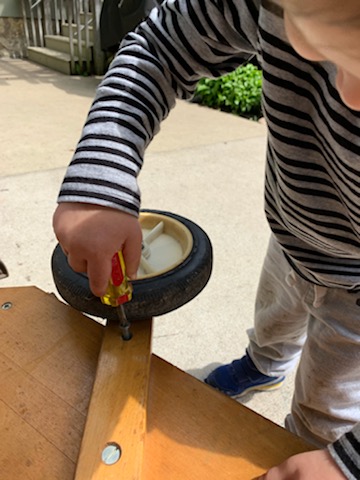
I return with a hammer and Jonathan immediately recognizes that I have made a huge mistake. “No, not that one! I need a hammer! Look, it has a line. I need a hammer to fit in there to make it tight.”
This was not Jonathan’s first rodeo. He knew his way around a tool bench, just not by name.
“Oh, let me look again,” I reply.
I return with three tools. “Jonathan, I have a hammer, a screwdriver and a wrench. Will one of these work?”
Jonathan’s eyes light up. “Yes, I need a screwdriver!” He jumps with joy and gets straight to work.
My little friend is a math machine. This is logical mathematical thinking! We have deductive reasoning and problem-solving at a three-year-old pace. Having the vocabulary to explain that he needed a tool that would fit in that “line” demonstrated that he could imagine the type of tool that he needed.
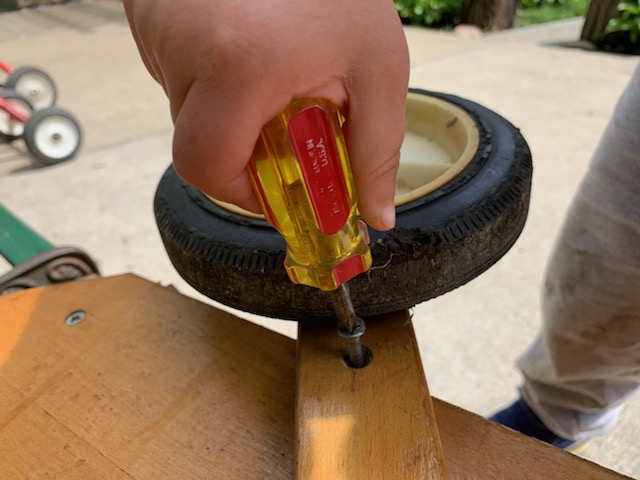
Early scenarios like this will deepen Jonathan’s understanding of how objects fit together. This is exploring spatial relationships. This is fine-motor skill development, relationship building and spatial reasoning—all at the same time.
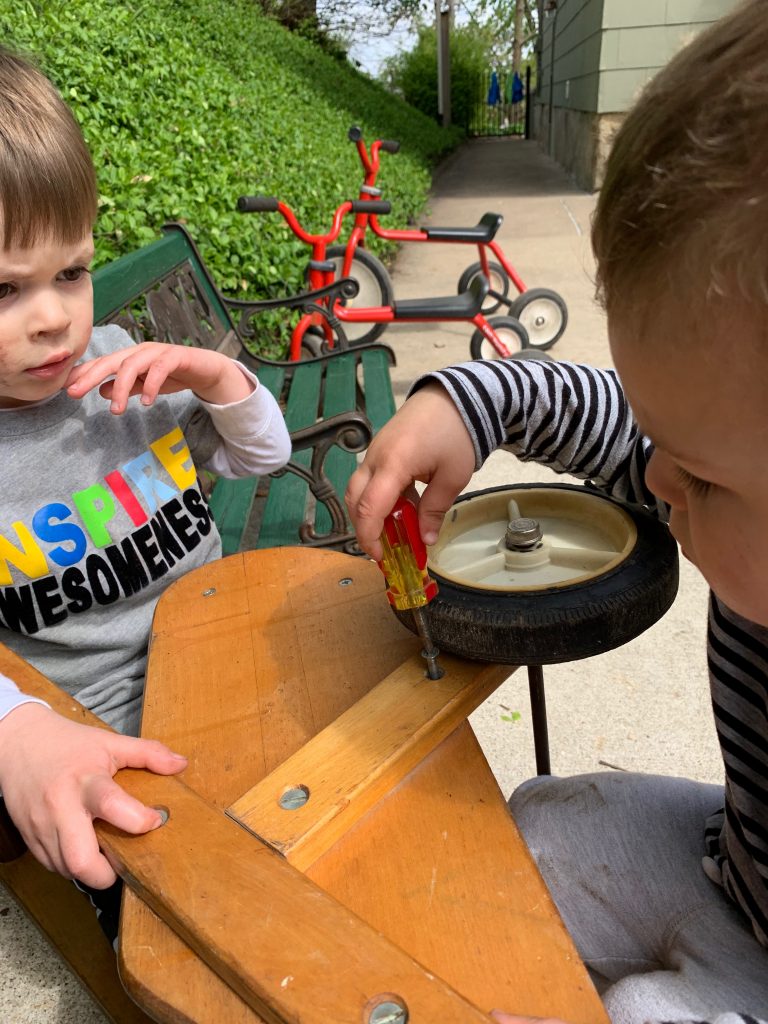
Jonathan’s spark of excitement ignites the interest of his friend, Harrison, who joins in. Harrison is also in need of a screwdriver because he has decided that the screws on every bicycle and wagon in the yard need a good tightening.
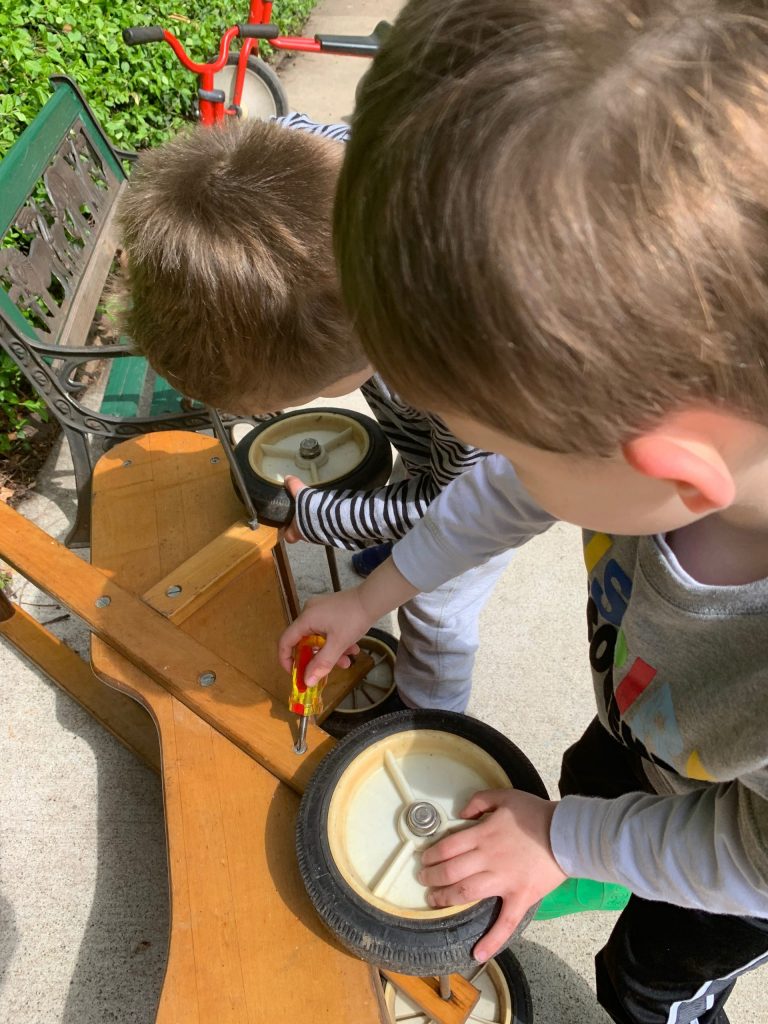
As Harrison and Jonathan discuss their actions, their understanding of spatial relationships and attributes about shapes, size and measurement deepens. High-quality hands-on experiences like these provide opportunities for children to develop a richer vocabulary as they reason out loud: “My screwdriver isn’t working. No, you need to turn it this way! Look, it’s going down!”
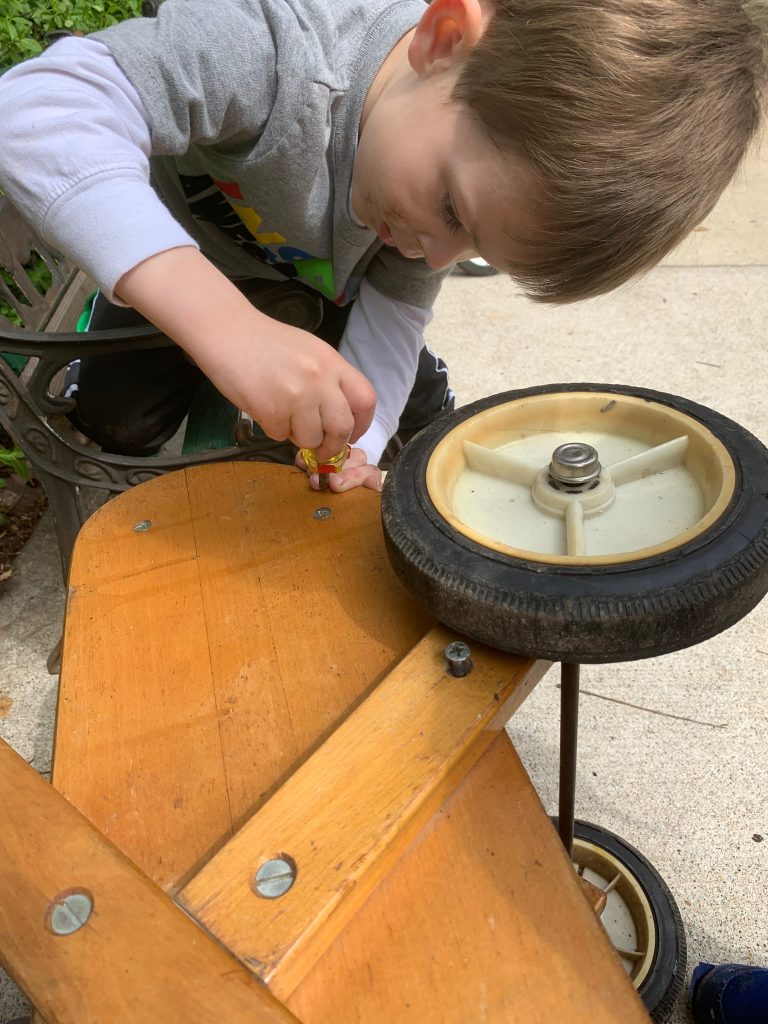
Children learn to understand and use information when they have direct contact with materials. Drawing a line from a hammer to a nail on a worksheet does not give our children the same educational benefits as an actual hands-on learning experience.
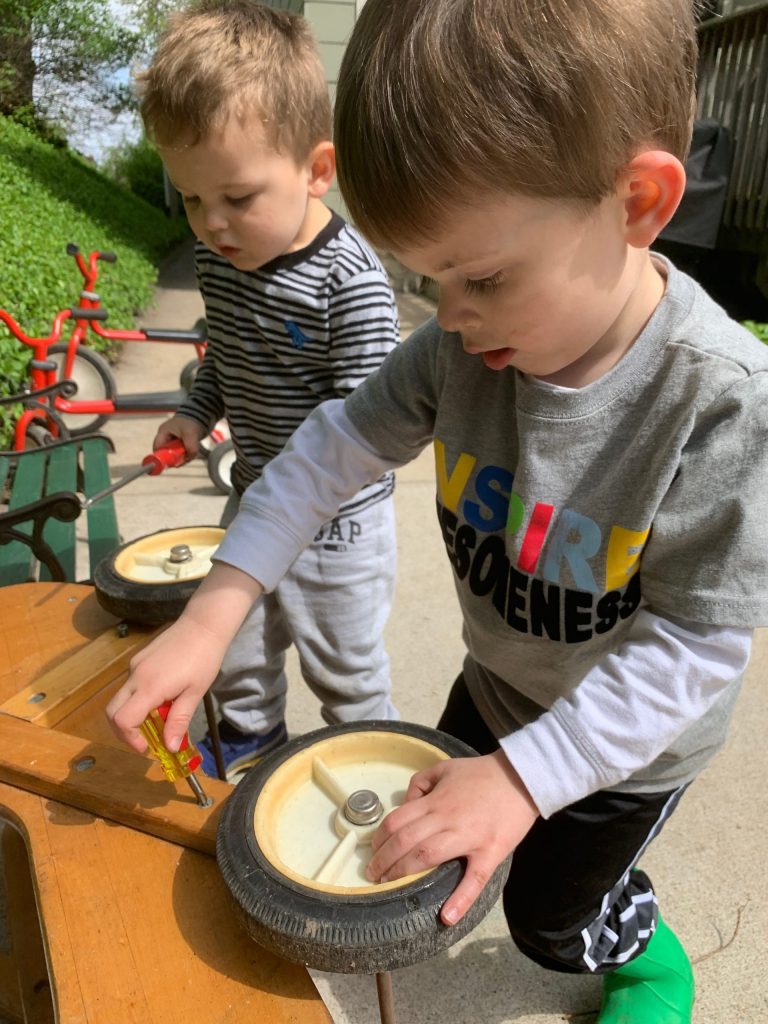
When children explore the different ways that they can manipulate materials—by rotating them, cutting them in half or transforming them into different shapes by composing or decomposing them—they are learning how materials relate to one another and the space around them. Working with real tools and materials is critical to fostering children’s understanding of spatial relationships. This is math. This is our foundation. I think you should check your wagon and see if that left wheel “needs tightening.” Don’t forget to document and check this off of your list of learning standards! Take your young friends outdoors. The math curriculum? It’s already “pre-loaded” into the activity!
I have never taught of this ideal it is very interesting will try with my students.
I love this activity! Utilizing tools and building screws is such a great idea for preschoolers who are developing their fine motor schools and spatial relationships. I would try and implement this activity in my class.
We have a small plastic tool set that helps build cars. I never thought about this using spacial reasoning and how the shapes of the screwdriver vs hammer to help the item to be fixed would amount to a math concept! My kids will love this one!
Its amazing how a three year old has the ability to know that he needs tools to fix something. Great activity!
love that the kids use “real ” tools!
Wow it’s a great diy a lot skills involve.
It amazes me how much interest these children have. We must provide them with tools for hands on activities.
Great activity for children to develop their math skills. Hands on math is the way to go.
Definitely will be trying this method!
Will be trying this method